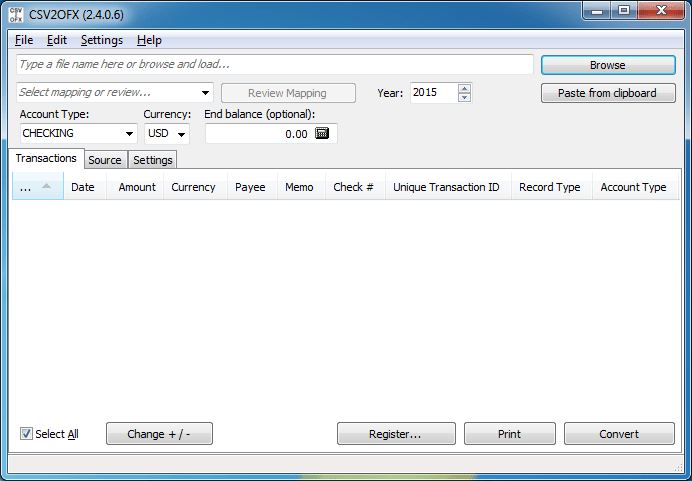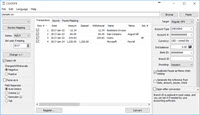

Now the OFX file is created, let's switch to Quickbooks Online and import created OFX file. Import created OFX file into Quickbooks Online
#Csv2ofx free software#
Set the Account ID (number) and the Account Type.Īlso check Currency, End balance, Bank ID, and Branch ID.Ĭhoose the OFX target to better work with your accounting software or use the "Regular OFX" option.Ĭlick the 'Convert' button to create an OFX file. Make sure expenses are negative and deposits are positive. Review transactions before converting, reassign columns if needed. Download it from the CSV2OFX download page. Make sure you are using the latest version of CSV2OFX.
#Csv2ofx free trial#
#Csv2ofx free pro#
Many accounting software packages like QuickBooks Desktop (any edition like QuickBooks Pro or QuickBooks Premier or QuickBooks Accountant) provide a buffer zone (bank feeds center) to review imported transactions and delete (ignore) or add to the register. Do backups for major changes like disabling online services as well. Import data with confidence you can easily rollback to previous state.

Apps like QuickBooks or Quicken provide easy to use and fast backup options that will take few seconds and save you lots of lost time in case of incorrect import. Import created file to Xero, Sage One or other OFX importing software or online serviceĪlways Backup your accounting software company data fileīefore importing any files into your accounting software, make sure to backup your company data file.Click Convert to convert CSV/XLS/XLSX to a OFX file.Backup your accounting software file before importing any file.Select a CSV/XLS/XLSX file with transactions and review transactions.How can I use CSV2OFX to convert transactions from CSV/XLS/XLSX format? Safe to use: CSV2OFX converts all your banking transactions on your computer.
#Csv2ofx free for free#


 0 kommentar(er)
0 kommentar(er)
